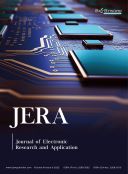New Generation Semi-Automatic Thermosonic Wire Bonder
Abstract
The physical and technological aspects of wire ball-wedge bonding in the assembly of integrated circuits are considered. The video camera and the pattern recognition system (PRS) of new bonder helps to provide accurate positioning of the bonding tool on the chip pads of integrated circuits. The formation of the loop wire cycle is ensured by the synchronous movement of the bonding head along the Z axis and the working table along the XY axes based on the servo drive. A feature of the bonder is that it can bond all the wire loops of the electronic device according to the pre-recorded program without needing to align the bonding points.
References
Prasad SK, 2004, Advanced Wirebond Interconnection Technology, Kluwer Academic Publishers, New York.
Kundas SP, Lanin VL, Tjiavlovsky MD, et al., 2003, Ultrasonic Processes in the Manufacture of Electronic Products, Volume 2, Bestprint, Minsk.
Ramsey TH, Alfaro C, 1991, The Effect of Ultrasonic Frequency on Intermetallic Reactivity of Au-Al Bonds. Solid State Technology 1991(12): 37–38.
Petuhov I, Lanin V, 2016, Technology and the Equipment for the Wire Bonding of Electronic Modules. Electronics: Science, Technology, Business, 2016(1): 178–185.
Farassat F, Valev S, 2004, Control of the Process of Ultrasonic Welding: Solving Problems of Instantaneous Quality Assessment, Documentation, and Statistical Analysis. Electronic Components, 2004(11): 1–5.
Lanin VL, Tsinman AF, Petuhov IB, 2011, The Choice of the Polarity of the Electric Discharge During the Formation of the Ball in the Installations of the Connection of Wire Terminals. Vestnik PSU, 2011(3): 110–116.
Harmann GG, 2010, Wire Bonding in Microelectronics, McGraw Hill, New York.

